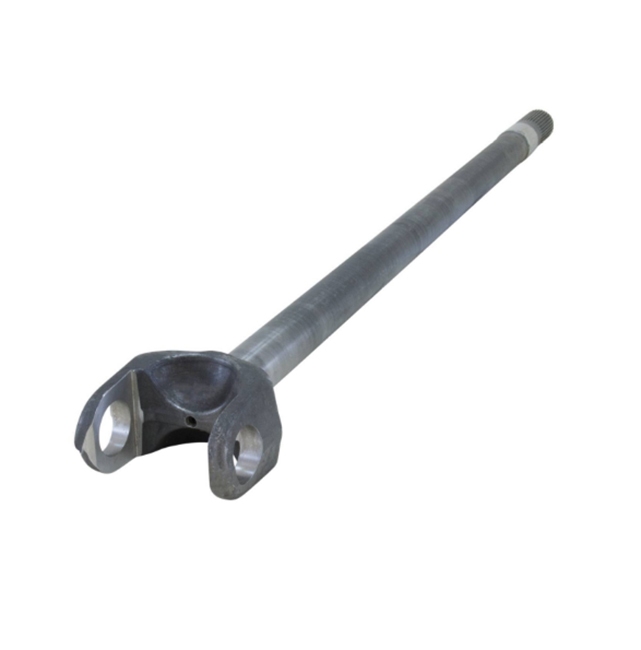|
Ford 429/460 Engines: How to Build MAX-Performance
Description:
Learn to make incredible horsepower from Ford’s most powerful big-block engine design.
For years, Ford relied on the venerable FE big-block engine design to power its passenger cars, trucks, and even muscle cars—and why not? The design was rugged, reliable, amortized, and a proven race winner at Le Mans and drag strips across the country. However, as is always the case with technology, time marches on, and Ford had a new design with many improvements in mind. Enter the 385 family of engines (also known as the “Lima” big-block). Produced from 1968–1998, the 385-series engines were used in multiple applications from industrial trucks to muscle cars and luxury cruisers.
In Ford 429/460 Engines: How to Build Max Performance, which was written by Ford expert Jim Smart, all aspects of performance building are covered, including engine history and design, induction systems, cylinder heads, the valvetrain, camshaft selection, the engine block, and rotating assemblies. The best options, optimal parts matching, aftermarket versus factory parts, budget levels, and build levels are also examined. The 429/460 engines are a good platform for stroking, so that is covered here as well.
Whether you want to build a torque-monster engine for your off-road F-150, a better-preforming version of a 1970s-era smog motor for your luxury Lincoln, or an all-out high-horsepower mill for your muscle car, this book is a welcome addition to your performance library.
Pages : 160
Size : 8.5 X 11 (inches)
Format : Paperback / softback
Illustrations : 355 color photos
Publisher : CarTech
ISBN : 9781613256046
Product Code : SA507
Acknowledgments
Introduction
Chapter 1: Building Basics
Organization
Parts Selection
Compression Ratio
The Physics of Power
Wasted Power
Building a 429/460 Stroker Engine
Stroker Power Pointers
Assembly Techniques
Mock-Up Phase
Ford Part/Casting Numbers
Basic Part Numbers
Date and Foundry Codes
Ford Muscle Parts
Good, Better, Best
Controller Kit
Dominator Kit
Chapter 2: The Block
Aftermarket Blocks
Budget Blocks
Boss 429 Block
Block Identification
Block Preparation
Fasteners, Clean Threads, and Torque
Chapter 3: Rotating Assembly
Crankshaft Selection
Forged Steel Crankshafts
Crankshaft Differences
Connecting Rods
Rod Ratio
Piston Selection
Stroker Kits
Building a Stroker
Strength in Stud Girdles
Harmonic Dampers and Flywheels
Dynamic Balancing
Chapter 4: Lubrication
Pump Blueprint Recipe
Improved Oil Control
Oil Pan
Chapter 5: Cylinder HeadsBoss 429
Aftermarket Cylinder Heads
Aftermarket 429/460 Wedge Cylinder Heads
Head Work
Valve Spring Pressures
Spring Height
Airflow
Chapter 6: Camshaft and Valvetrain
Camshaft Technical Talk
Street Camshafts
Dual-Pattern Camshafts
Racing Camshafts
Why Degree a Camshaft?
Timing Components
Lifters
Rocker Arms and Pushrods
Valvetrain Geometry
Rocker-Arm Adjustment
Chapter 7: Induction
Carburetor Selection
Carburetor Size
Holley Carburetors
Edelbrock Carburetors
Carter Carburetors
Demon Carburetors
Quick Fuel Technology
Weber Carburetors
Bolt-on EFI
Intake Manifold
Quick Power
Supercharging and Turbocharging
Chapter 8: Ignition
Spark Knock
Breaker Point Ignition
Dwell Time
Electronic Ignition
Ignition Coils
Distributor Types
MSD Ignition
Mallory Ignition
Performance Distributors
Ignition Wires
Spark Plugs
Charging System
Starters
Senders
Chapter 9: Exhaust
System Sizing
Secondary Tubes and Collectors
Equal-Length, Step, and Tri-Y Headers
Exhaust System Selection
Stainless or Aluminized?
Chapter 10: Break-In and Tuning
Break-In
After Break-In
Chapter 11: Power Builds
429 Super Cobra Jet
460 Street/Strip Build
MCE 598-ci T-Rex Build
Defining Blueprint
MCE T-Rex 598 on the Dyno
Appendix: Engine Math
Source Guide
|


